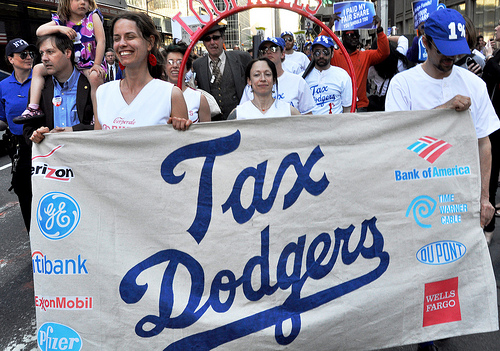Read reactions to this piece here
If you follow the renewable energy industry and haven’t been sleeping, then you’ve probably heard about one of the few pieces of federal legislation purported to help clean energy that’s actually moving: expanding Master Limited Partnerships (MLPs) to cover wind and solar energy. (H.R.1696)
This is not a good thing.
MLPs originated in 1986, when Congress decided that to allow certain businesses (oil and gas pipelines) to avoid paying corporate income tax. These partnerships function a lot like publicly traded corporations, with publicly traded stock, but don’t pay income taxes. Most folks who’ve touted expanding MLPs to include renewable energy projects see this move as “leveling the playing field.” And it will, allowing big energy corporations to avoid paying taxes on their renewable energy projects just like they do for pipelines.
But that’s not the worst. Several years after the MLP was created, the federal agency responsible for setting the prices to use these oil and gas pipelines (the Federal Energy Regulatory Commission) allowed the not-paying-corporate-income-tax companies to charge rates for access as though they DID pay the corporate income tax. Including this phantom tax payment in rates amounted to a 75% increase in after-tax profits for pipeline companies. This policy wasn’t even set in a public forum (such as a docket with public hearings), but through a shadow “policy statement” released after private meetings with the oil and gas industry (and after a federal judge had previously struck down the absurd notion that users of pipelines should have to pay phantom taxes).
This makes two big problems in adding renewable energy companies to the list of eligible Master Limited Partnerships.
First, there are many powerful, regulated industries that would love a bite at this apple, like the existing electric and gas utilities. The cost to taxpayers from letting these hogs get to the trough is likely much, much larger than the opportunity for renewable energy. These big industries – with huge lobbying budgets – are not likely to miss the opportunity.
But even more important, the extension of MLPs to renewable energy is likely to reinforce centralized, corporate control of the energy system. Right now, renewable energy – particularly solar – is transforming the energy system. It’s turning energy consumers into producers, re-routing energy dollars back into community economies, and giving cities and towns more control over their energy future. Half or more of new solar power in the U.S. is being put on the rooftops of homes and small businesses. New community solar policies (like one just adopted in Minnesota!) are giving even more Americans a chance to have skin in the energy game and share in the profits of a transition to renewable energy.
The average American isn’t going to be a shareholder of a Master Limited Partnership, but they probably will pay a share of phantom taxes in their electric and gas rates if MLPs are expanded to other energy industries. Even if Congress miraculously limits the MLP expansion to just the renewable energy industry, subsidiaries of most of the large corporations in the energy business (Shell, BP, Exxon) are building wind and solar projects. These subsidiaries would certainly be reorganized as MLPs, giving them a tax advantaged opportunity to crowd out competitors (like community solar or other distributed generation) AND make larger profits off their renewable energy business.
There are many ways the federal government could improve its policy toward renewable energy. A CLEAN Contract or feed-in tariff could supplant tax credits that act as a barrier to production-based payment for energy and avoid paying for panels that don’t produce power. The feds could remove ridiculous bonus incentives for long-distance, high-voltage transmission that gives electric companies an incentive to build power lines for 20th century power plants instead of distributed solar and wind power. They could set a federal distributed renewable energy standard that requires utilities to procure energy from places close to where people use it.
But let’s not expand a tax loophole to big renewable energy companies. This is one playing field best left unmoved.
(most of this article is based on a book, The Fine Print by former New York Times writer David Cay Johnston)
Photo credit: Michael Fleshman





